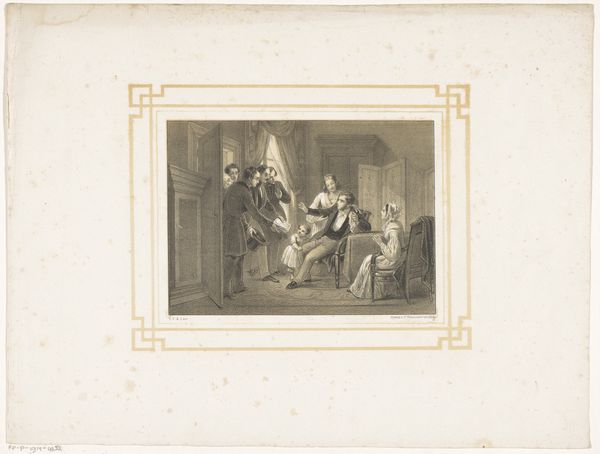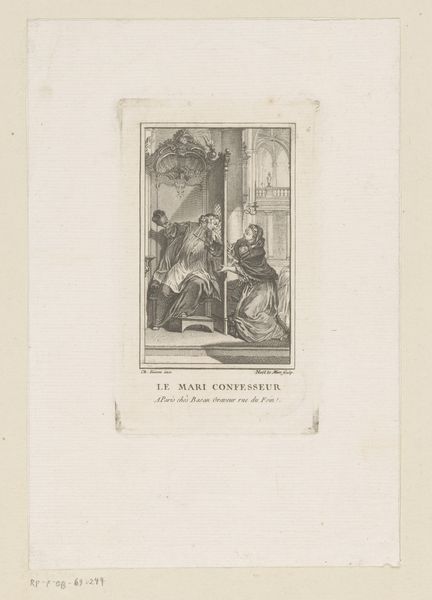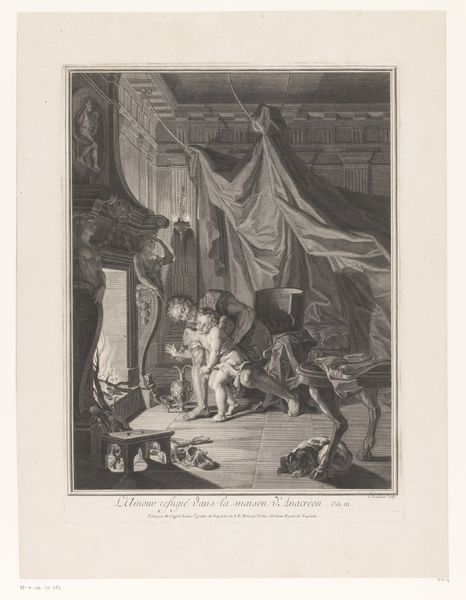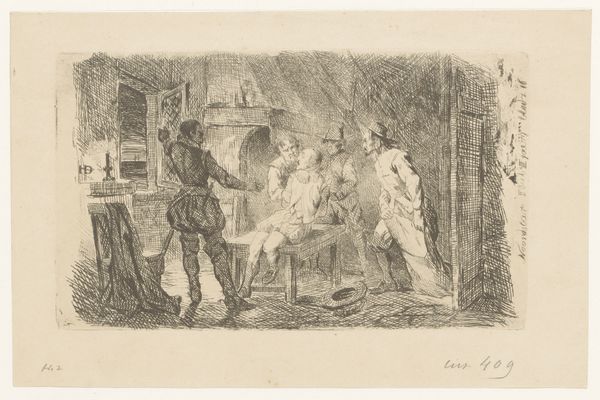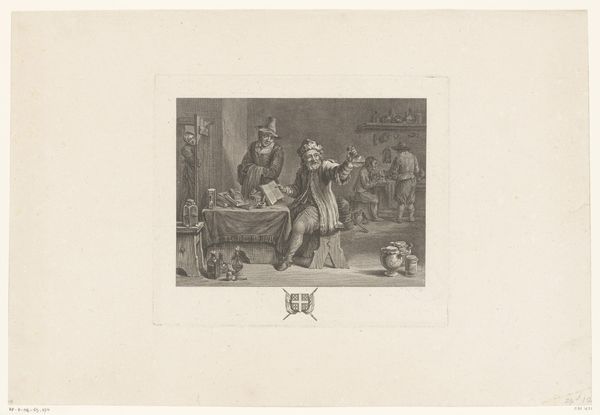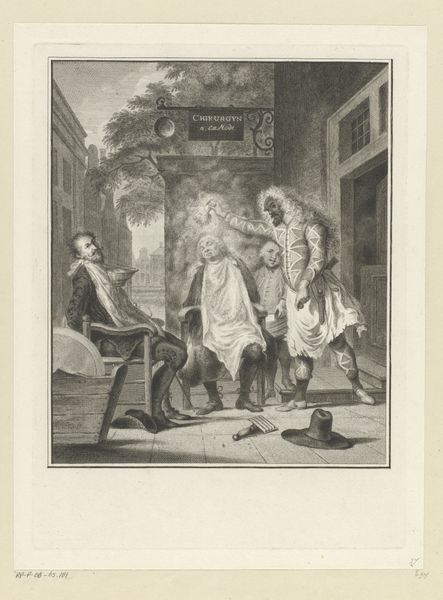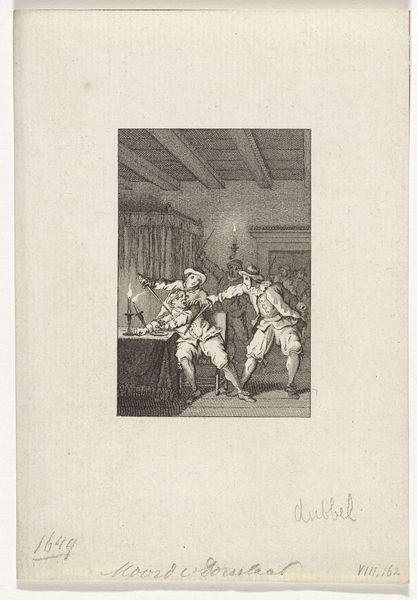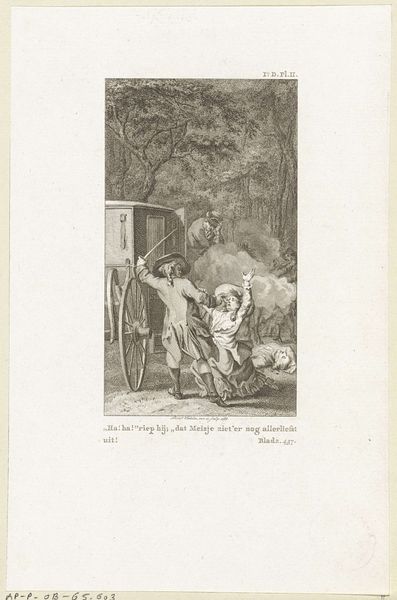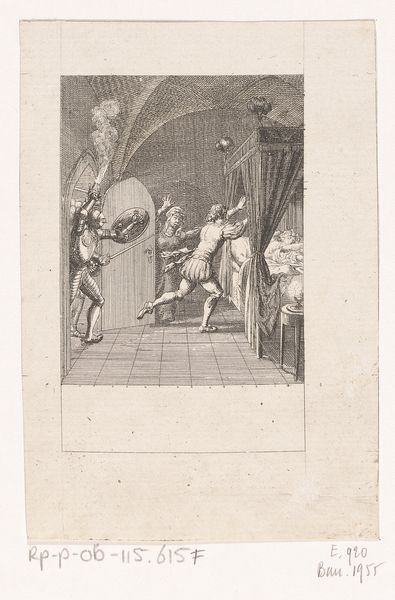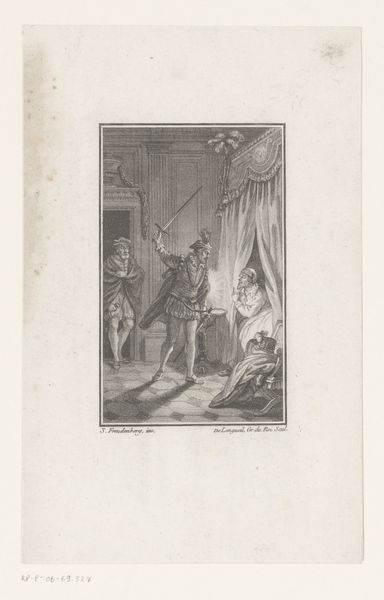
etching, engraving
#
narrative-art
#
baroque
#
etching
#
figuration
#
line
#
genre-painting
#
engraving
#
realism
Dimensions: height 142 mm, width 81 mm
Copyright: Rijks Museum: Open Domain
Editor: So, this is Johann Heinrich Meil’s “Fable of the Villagers and the Snake,” created around 1758 using etching and engraving. It's pretty stark, almost theatrical in its depiction of this domestic drama, you know? The guy is about to chop the poor snake! What do you make of it? Curator: Oh, this is lovely! It sings of that precarious balance, doesn't it? The serpent, warmed by the fire of human kindness, then repaid with distrust and violence. There’s a timeless irony here, a dance between perceived threat and human nature. Doesn't the way he wields that axe almost feel… performative? Like he's staging his own righteousness? Editor: Performative, interesting! So it's less about actual danger, and more about... proving something? Curator: Perhaps. Consider the age - this piece reflects the anxieties of its time, anxieties around the "other," the outsider, that still ring true, right? This fear, it contorts kindness into violence so readily. Do you think the artist is endorsing the villager's actions? Or perhaps gently mocking this overblown reaction? Editor: I see what you mean! The exaggerated stance... Maybe it's both? A commentary on fear *and* on overreacting to that fear. I hadn't thought about the "outsider" aspect so directly before. Curator: Art is always about layers, isn’t it? What appears simple often unveils itself to be beautifully complex with a bit of digging. Editor: Definitely given me something to think about, it goes way beyond chopping a snake in a room! Thanks!
Comments
No comments
Be the first to comment and join the conversation on the ultimate creative platform.

